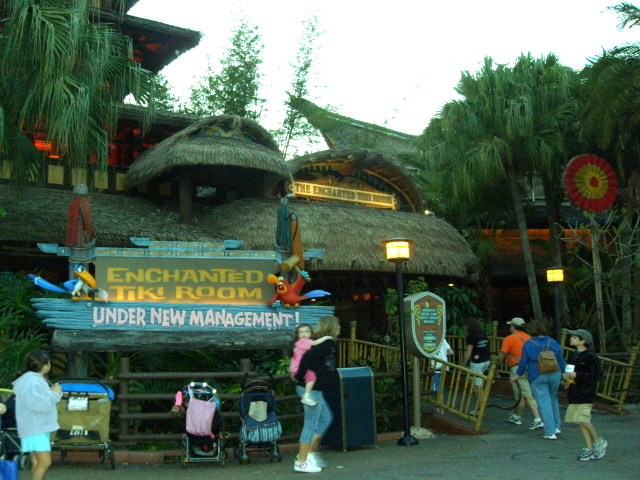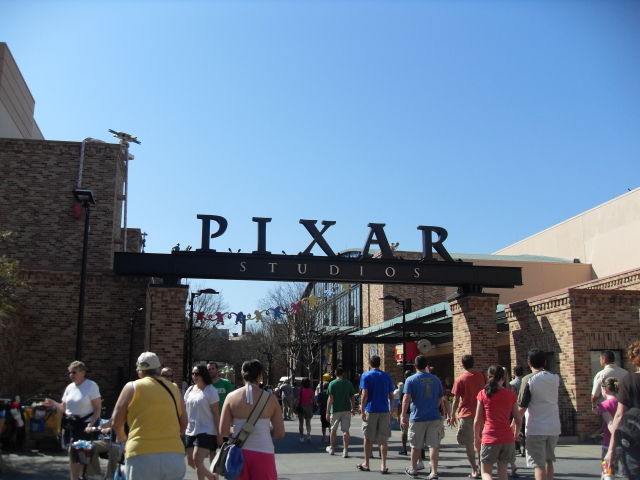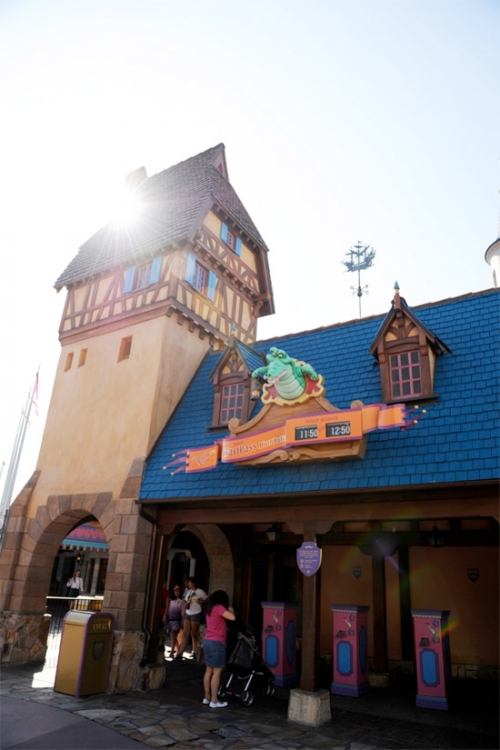4. Change for the sake of change

Some of the attraction decisions made during the Eisner years are baffling to anyone outside his inner circle. It is true, for example, that 20,000 Leagues Under the Sea was slow-loading and difficult to maintain. But to shutter a beloved classic attraction on a prime piece of Fantasyland real estate, leave it standing but not operational for more than 10 years, and then fill it up with concrete to build a playground? What sense does that make?
How about the Enchanted Tiki Room: Under New Management? Synergy tells us that movie characters need to be added wherever possible, but how did the suits really expect guests to react to a weirdly meta, self-referential show run by birds who were as intentionally annoying as they could possibly be?
The 1997 announcement that Mr. Toad’s Wild Ride would close in 1998 to make room for an attraction featuring Winnie the Pooh set off one of the first Internet protests. A firestorm erupted as ride fans planned online and then met at the Magic Kingdom, some wearing “Ask Me Why Mickey Is Killing Mr. Toad” T-shirts, for public ride marathons known as Toad-Ins. The protest drew national media attention, but ultimately did no good. Mr. Toad took his last ride on September 7, 1998. Though no official explanation was ever given, speculation is that Pooh merchandise was selling well, while no Mr. Toad merchandise was sold in the parks. Synergy at its finest?
Possibly the most confusing random change was to Epcot’s Journey Into Imagination. By all accounts still a fiercely popular ride, the wondrous and highly creative Journey Into Imagination closed with little warning in 1998. It reopened a year later as Journey Into Your Imagination, a bizarre combination of optical illusions that lacked Dreamfinder and Figment, the attraction’s stars and Epcot’s original icon characters. Ongoing feedback from angry guests led to Figment’s reintroduction in the ride’s third incarnation, 2002’s Journey Into Imagination With Figment. Dreamfinder is still nowhere to be found, and Figment has grown from a lovable toddler to a sarcastic teen.
5. FastPass
Image: Disney
Disney’s 1999 introduction of FastPass revolutionized the theme park industry, but whether this was good or bad depends on your point of view. Similar systems were quickly implemented at theme parks around the world. Some systems, like FastPass, serve as virtual queues in which visitors return to a shorter line. Others, like Universal Express, are paid programs that allow guests to join the shorter line at any time.
Although FastPass and similar systems provide several benefits to guests, it would be naïve to assume that Disney was looking out for our best interests. In fact, FastPass was the perfect way to get guests out of lines and into restaurants and shops, further increasing the bottom line. Like the Magic Your Way ticket system and Disney’s Magical Express, also introduced during the Eisner years, FastPass also helped to ensure that visitors stayed on property rather than venturing out to spend money at other local attractions.
After Eisner

Following Roy Disney’s very public “Save Disney” campaign, Michael Eisner was removed as chairman in a 43% vote of no confidence. He soon announced that he would step down as CEO in 2005, a year ahead of schedule. Former Eisner right-hand man Bob Iger was installed as CEO, and many hoped that his tenure would lead to a rebirth for Disney.
Iger got off to a strong start, mending fences with Pixar, which had split from its long-time Disney partnership following a disagreement with Eisner in 2004. Disney acquired Pixar in 2006, installing former Disney animator John Lasseter as Chief Creative Officer of Walt Disney Feature Animation and Principal Creative Adviser for Disney Imagineering. Iger also dissolved Disney’s strategic planning division and restored decision-making power to individual business divisions. It seemed that a bright new day had dawned.
However, there are worrying signs that Iger’s Disney seems increasingly corporate. Rumor has it that the company spent nearly $2 billion dollars on FastPass Plus and My Disney Experience, which combine advanced ride reservations with an unprecedented system for tracking and strategic planning.
Only time will tell whether these investments were the right move for Disney. With Comcast investing heavily in new rides and attractions for Universal, and especially with the recent expansion of the Wizarding World of Harry Potter, Disney finally faces some real competition. Why not turn the Imagineers loose to develop a truly immersive E-ticket or two for each park?
It remains to be seen whether Iger's legacy will be the dramatic turnaround of Disney California Adventure and improvements to the guest experience, or whether the My Disney Experience programme will become a millstone around his neck just as EuroDisney did for Eisner.

Add new comment